Results 5,751 to 5,760 of 12094
Thread: Anandtech News
-
02-21-16, 12:31 PM #5751
Anandtech: Lenovo Launches New MIIX 310 Tablet, Yoga 510 And Yoga 710 Convertibles At
The Yoga brand has permeated much of Lenovo’s laptop lineup, and they offer some of the best convertible device experiences out there. It should really be no surprise then that Lenovo is expanding this brand further, with the new Yoga 510 and Yoga 710 models. In addition, they are launching a new Windows 10 based tablet, which is the MIIX 310.
The Yoga 900 is clearly the top of the range in Lenovo’s Yoga consumer lineup, but there is a lot of room underneath that model for some other devices. The Yoga 710 will slot in as a mid-range offering, in both an 11-inch and 14-inch model. The 14-inch version is a full Ultrabook, with 6th generation Core processors up to a Core i7 model, and the 11-inch version starts off with a quad-core Pentium but will be offered with up to a Core m5 version. The 14-inch model will also offer an optional GeForce GPU version, for those that need a bit more power for gaming or compute. Lenovo is also claiming 20% better Wi-Fi reception due to a new hinge antenna on the 14-inch 710, and up to a 256 GB SSD on this model. Both are claimed to offer up to 8 hours of battery, and the displays are 1920x1080 IPS models. Sound is courtesy of Dolby Atmos virtual surround sound.
The 11-inch Yoga 710 will start at just $499, and the more powerful 14-inch version has a starting price of $799. These will be available in May.
The Yoga 510 offers the same four modes as the other Yoga models, and will be offered in both a 14-inch and 15-inch version. The lower end of the Yoga family is not as thin and light as the others in the lineup, with the 14-inch model coming in at 1.75 kg (3.85 lbs) and the 15-inch version tipping the scales at 2.08 kg (4.6 lbs). Both offer up to Core i7 processors, and optional AMD Radeon R7 M460 2GB GPUs. Lenovo claims up to 8.5 hours of battery life with these models.
The Yoga 510 14-inch version will start at $599, and the 15-inch model starts at $699. Both will be on sale starting in April.
The last Windows device announced today is the Ideapad MIIX 310. Back at IFA in September, Lenovo announced the MIIX 700 tablet, which was a 12-inch 3:2 offering competing directly against Microsoft’s Surface Pro tablets. The MIIX 310, as you’ve likely figured out from its product name, is a less expensive offering in the MIIX family. This is a 10-inch tablet which weighs in at just 580 grams (1.27 lbs) but offers a full Windows 10 experience. It has a detachable keyboard as standard, which is pretty great, and Lenovo claims 10 hours of battery life with the optional 1920x1080 display. You can also get it with up to 64 GB of eMMC and 4 GB of DDR3L RAM. Lenovo doesn’t list the processor yet but it’s likely going to be an Intel Atom based on Cherry Trail. The MIIX 310 will be on sale starting in June for just $229.
Although we all love the high end offerings, it’s the mid-range where most of the work gets done. It’s always great to see high end features like IPS displays and SSDs make their way down into the mid-range. Hopefully we can get some of these in to check them out.
Source: Lenovo
More...
-
02-21-16, 12:31 PM #5752
Anandtech: Lenovo Announces The VIBE K5 and K5 Plus
Along with their tablet and PC announcements today at MWC, Lenovo also announced two new smartphones under their VIBE branding. The new phones are the Lenovo VIBE K5 and VIBE K5 Plus, with each device targeting a slightly different price, along with packing different specs. The details of both of their specs can be found in the table below.
To be honest, I think it's a shame that these phones never seem to make their way to North America. Looking at the specs and the price, you're really getting a lot of phone for your dollar. The VIBE K5 is powered by Qualcomm's Snapdragon 415 SoC, while the K5 Plus uses Snapdragon 616. What's interesting about Qualcomm's new SoC portfolio is that the only real difference between the best 400 series and 600 series SoCs is the clock speed, with both being octa core Cortex A53 chips. While I really can't find a functional reason for putting eight of the same cores with the same max frequency on an SoC, I suppose that it does help greatly with a device's marketability in regions like China. Both SoCs use Adreno 405, which really helps to address my complaints about the GPU performance that we've seen in devices at the low end of the market.Lenovo VIBE K5 Lenovo VIBE K5 Plus SoC Qualcomm Snapdragon 415
8 x 1.4GHz Cortex A53Qualcomm Snapdragon 616
4 x 1.7GHz Cortex A53GPU Qualcomm Adreno 405 @ 550MHz RAM 2GB LPDDR3 NAND 16GB eMMC + MicroSD Display 5.0" 1280x720 LCD 5.0" 1920x1080 IPS LCD Thickness / Mass 8.2mm / 142g Camera 13MP Rear-facing
5MP Front-facing w/ fixed focusBattery 2750mAh OS Android 5.1 Lollipop Other Connectivity 2.4GHz 802.11b/g/n + BT 4.1, Micro-USB 2.0 SIM Dual SIM with 4G LTE Price $129 $149
Aside from the SoC, the other point that separates the K5 and the K5 Plus is the display. The K5 is just advertised as having a 1280x720 LCD display, while the K5 Plus is a 1920x1080 IPS LCD. The fact that the IPS specification is omitted from the K5 does concern me, but I wouldn't expect that it's using a TN panel as that would probably be more difficult to source than an eIPS or a VA panel.
In all other ways the K5 and K5 Plus are identical. Both phones have 16GB of eMMC NAND and 2GB of LPDDR3 memory, plus a MicroSD card slot for expansion. Both have a 13MP rear-facing camera, and a 5MP front-facing camera which for some unfortunate reason has a fixed focus. WiFi connectivity is your standard 2.4GHz 802.11n, which is the best you'll get at this price point. There is dual-SIM support, although it's not clear whether this is DSDS or DSDA, and what network capabilities the second SIM has.
The Lenovo VIBE K5 and VIBE K5 Plus will be available in March, with the K5 priced at $129 and the K5 Plus at $149. Both phones will be available in silver, grey, and gold finishes. As usual, the phones won't be coming to the US or Canada, but they'll be available in the existing markets that Lenovo services.
More...
-
02-21-16, 02:00 PM #5753
Anandtech: HTC Vive Will Be Launching In April Priced At $799
Today HTC confirmed both the release date and price for the HTC Vive VR headset. Vive has gone through a couple of delays at this point, with an April release date being stated back in December of last year. Not only has the April date been solidly confirmed this time, but the other key unknown, the price, has also been confirmed to be $799.
At first glance, a $799 price point seems awfully expensive. However, HTC and Valve are marketing the Vive as the "full experience" and note that the $799 package will include the headset, the two lighthouse base stations for room tracking, and two controllers. In comparison, the Oculus Rift does come in significantly cheaper at $599 for the headset, but the controllers for the Rift have also been delayed until the second half of 2016, and they will be an additional cost on top of the $599 price. With the Rift coming out in March and the Vive in early April, consumers looking to be early adopters of VR are going to have to decide on whether they think the additional $200 up front is worth it for the additional hardware that the Vive includes, or if they'll be betting on the Rift and waiting for its special controllers later in the year.
One other thing that HTC mentioned is something called Vive Phone Services. This is essentially a feature that integrates with your iOS or Android smartphone and allows you to receive and respond to texts and calls while using your Vive. You can also check upcoming calendar invites as well, ensuring that you don't forget about what you need to do in actual reality while enjoying a world of virtual reality
Of course, on top of the cost of a VR headset is the cost of a PC powerful enough to drive it. With that in mind, differences in cost on the order of a couple hundred dollars may be less significant than they seem when comparing the headsets themselves. The countdown on the HTC Vive product page is now just under 8 days, and when it gets to zero preorders for the Vive will open to the public. On top of the headset, base stations, and controllers, for a limited time those who purchase the Vive will get Job Simulator by Owlchemy labs, and Fantastic Contraption by Northway games.
More...
-
02-21-16, 05:46 PM #5754
Anandtech: Early Exynos 8890 Impressions And Full Specifications
It's been an interesting day here in Barcelona as I've had the pleasure to get a hands-on with both LG's new flagship, the G5, as well as Samsung's new Galaxy S7. While Joshua's hands-on article was based on the Snapdragon 820 variant of the Galaxy S7 which we'll be seeing in US and likely Chinese markets, the samples here in Barcelona were European units based on Samung LSI's own Exynos 8890 processor. Without wasting too much time I quickly took a deeper look into one of the devices on display at the event to be able to find out some of the missing information that we've been lacking on the Exynos 8890.
The Exynos 8890 employs Samsung's own designed Exynos M1 cores. The micro-architecture at a high level resembles ARM's big cores, but Samsung seems to have made quite a few changes and improvements when compared to ARM's designs. While by now I do have a quite good idea of what the Exynos M1 looks like, we'll be covering the topic more in-depth in a future article once we'll be able to gain better insight from our own unit for proper benchmarking and pozer measurements.High-End SoCs Specifications SoC Snapdragon 820 Exynos 8890 Exynos 7420 CPU 2x Kryo@1.593GHz
2x Kryo@2.150GHz4x A53@1.586GHz
4x Exynos M1 @
2.60GHz (1-2 core load)
2.29GHz (3-4 core load)4x A53@1.50GHz
4x A53@2.1GHzMemory
Controller2x 32-bit
LPDDR4 @ 1803MHz
28.8GB/s b/w2x 32-bit
LPDDR4 @ 1794MHz
28.7GB/s b/w2x 32-bitLPDDR4 @ 1555MHz
24.8GB/s b/wGPU Adreno 530
@ 624MHzMali T880MP12
@ 650MHzMali T770MP8
@ 770MHzMfc.
ProcessSamsung
14nm LPPSamsung14nm LPPSamsung14nm LPE
On the CPU side we find an 8-core SoC composed of 4x Cortex A53 cores running at up to 1.586GHz coupled with 4x Exynos M1 cores in a big.LITTLE configuration. The most surprising revelation was the fact that the M1 cores reach an extremely high clock of up to 2.6GHz. This represents quite a significant boost over some past rumours which had put expectations 2.3-2.4GHz maximum frequency range. The catch here is that the Galaxy S7's power management doesn't allow all four cores to run at this high frequency but rather only enables the maximum clock when there's at most 2 cores loaded. If there are 3 or more cores under high load, the CPU frequency doesn't surpass 2288MHz.
On the GPU side we knew that we'd encounter a new ARM Mali T880MP12 - the currently largest Mali implementation available among existing SoCs. Back in November I theorized that Samsung would use the larger core implementation to lower the clocks of the GPU block and thus achieve better power efficiency. Indeed that's what seems to have happened as the Exynos 8890's GPU peaks at 650MHz versus the 770MHz frequency for the Exynos 7420. Hopefully this means that the new SoC will be able to maintain its peak performance for longer periods of time.
While I didn't have the time to run too many benchmarks, I did manage to run a few of our basic browser tests as well as GFXBench. We haven't had the opportunity to benchmark the Snapdragon 820 Galaxy S7 yet, therefore I included the score numbers of the MDP/S platform to represent a best-case scenario for the Snapdragon 820 until we can get apples-to-apples scores based on Samsung's browser. This still mostly due to the fact that Chrome is seemingly not yet optimized to take advantage of Kryo's new architecture, and as a result scores some rather mediocre numbers, as seen in some preliminary LG G5 numbers included in the graphs above.
Some quick GPU benchmarks also put the Exynos 8890 slightly behind the Snapdragon 820 in the MDP/S. We will still have to see if actual Snapdragon 820 devices are able to deliver the same performance as the MDP/S platform as there might be some thermal limitations coming into play. Again, we can't comment too much on the scores before we get to know each device's long-term performance and if the attained numbers are sustainable for long periods of time.
One observation I made today which was particularly concerning, was that both with the Snapdragon 820 LG G5 as well as the Exynos 8890 Galaxy S7 got considerably warm after running some heavy workloads. The fact that the Galaxy S7 touts having a heat-pipe thermal dissipation system is a quite worrying characteristic of the phone and should in no way be seen as a positive feature as it points to to high power draw figures on the part of the SoC.
The first impression is that the performance difference between the Snapdragon 820 and the Exynos 8890 doesn't seem to be very large, therefore it will be the SoC's power draws and power efficiencies which will determine if, and which one of both will represent a superior design. Hopefully in the coming weeks and months we'll be able to get a better understanding of this new generation of SoCs so that we can paint a definitive picture of the current status of the mobile SoC space.
More...
-
02-21-16, 10:31 PM #5755
Anandtech: Huawei Enters The PC Market With The MateBook Convertible Tablet
Move over Microsoft. One of the world’s largest smartphone makers has decided to enter the PC marketplace with the launch of the MateBook 2-in-1 tablet. Well, maybe not, but they have certainly taken a page out of the Microsoft playbook with their first tablet. This is a 12-inch tablet with a 3:2 aspect ratio. If that sounds familiar, that’s because it’s exactly the same aspect ratio and size as the Surface Pro lineup. Just like Lenovo and others, manufacturers are seeing the relative success of the Surface Pro and want their own piece of the action. And that’s great for all of us.
Rather than compete head on with the Surface Pro though, Huawei has gone for a slightly different target. The MateBook is thinner, and lighter than the Surface Pro, and it is designed around the Core m platform, so it is completely fanless. Only the base model Surface Pro can be had with Core m. Other notable internal items are 4 or 8 GB of memory, and 128, 256, or 512 GB of SSD storage. Battery capacity is 33.7 Wh, and Huawei says this gives all day battery life, but we’ll have to see if that’s true. The tablet itself is only 6.9 mm thick and weighs just 640 grams (1.4 lbs). The MateBook also comes in several hundred dollars less than the Surface Pro, with a starting price of $699, and goes up to $1599 with Core m7, 8GB of RAM, and a 512 GB SSD. The display is a 12-inch 2160x1440 LCD.
Convertible Tablets Model Huawei MateBook Microsoft Surface Pro 4 Lenovo MIIX 700 CPU Intel Core m3-6Y30 (4.5W)
Intel Core m5 (4.5W)
Intel Core m7-6Y75 (4.5W)Intel Core m3-6Y30 (4.5W)
Intel Core i5-6300U (15W)
Intel Core i7-6650U (15W)Intel Core m3-6Y30 (4.5W)
Intel Core m5-5Y54 (4.5W)
Intel Core m7-6Y75 (4.5W)Memory 4/8 GB 8/16 GB 4/8 GB Storage 128, 256, 512 GB SSD 128 GB to 1TB SSD 64, 128, 256 GB SSD Display 12" 2160x1440 12.3" 2736x1824 12" 2160x1440 Battery 33.7 Wh 39 Wh N/A Thickness 6.9mm (0.27") 8.4mm (0.33") 8.95mm (0.33") Mass 640g (1.41lbs) 766-789g (1.69-1.74lbs) 780g (1.72lbs) Price $699-$1599 $899-$2699 $749-$1099
You can’t compete against Surface Pro without accessories, and the MateBook has both an active pen and click on keyboard to transform it into a laptop. The keyboard has backlit keys with 1.5mm of travel, but the actual keys themselves are very much like the Surface Pro 3 keyboard rather than the much improved Surface Pro 4 design. The tablet also lacks a kickstand, and instead the keyboard dock does some clever folding to hold the display up when it’s docked. The keyboard connects with pogo pins, so you don’t have to worry about Bluetooth connectivity for the connection, or batteries in the cover. The cover will sell for $129.
The other accessory is an active pen, and while we don’t know the pen technology at this point, Huawei does say that it has 2048 levels of pressure sensitivity. It also features a laser pointer in the pen for use during presentations. The pen charges over USB, and one hour of charge gives one month of use.
It’s great to see a new entrance into the PC space, and Huawei has designed what looks to be a pretty nice tablet for their first attempt. The Surface Pro is definitely the inspiration for the MateBook, and that’s not a bad thing, but the keyboard has been improved a lot of the latest tablet from Microsoft, and the MateBook type cover appears to mimic the prior generation here. Also the display is a much lower resolution panel than the latest offering from Redmond, but it does match the well received Surface Pro 3 model. I’m very excited to see another entrant here though and hopefully we can get this in for review to see how it stacks up.
More...
-
-
02-22-16, 01:55 AM #5757
Anandtech: Imagination Announces PowerVR Series8XE Family - Entry-Level GPUs Get Smal
With Mobile World Congress 2016 now in full swing, we’ll see a slew of announcements this week. Among the crowd is Imagination Technologies, who is using the show as a backdrop to discuss their latest generation of GPU technologies. To that end, today the company is announcing the latest iteration of their Rogue architecture for the entry-level SoC GPU market, PowerVR Series8XE.
Throughout the lifetime of the Rogue architecture, Imagination has offered two families of designs: the XT family for high performance devices, and the XE family for cost-sensitive entry-level devices. As this is the SoC space both families are focused on power efficiency, but whereas the XT family focuses on a higher overall class of features and performance, the XE family focuses on minimizing overall die size and including a smaller, core set of features. And though both get similar Series branding (e.g. Series7), it’s perhaps more accurate to say both are separate takes on the Rogue architecture, sharing technologies where it makes sense but also being more differentiated than simply their performance targets.
In any case, in a break from tradition, for their newest integration of the Rogue architecture Imagination is not announcing both the XT and XE parts at the same time this year. Rather it’s solely the entry-level Series8XE that’s getting announced at this time, making it Imagination’s sole MWC 2016 GPU announcement.
With Series8XE the underlying Rogue architecture has not significantly changed from previous iterations, however Imagination has continued to optimize it for the low cost and low power markets this GPU family is targeted at. Like Series7XE, this ranges from high-end wearables and IoT devices up to midrange phones and tablets.
From a technical perspective, compared to the last-generation Series7XE, Series8XE gains a couple of notable features. 8XE is OpenGL ES 3.2 capable (versus 3.1 for the base 7XE configuration), updating the GPU to support the latest feature sets required for ES 3.2 while also providing those features for Vulkan. And although Imagination doesn’t explicitly state it, that this isn’t listed as a separate, optional feature implies that tessellation and ASTC are now base features for 8XE. Meanwhile support for OmniShield, the company’s hardware security zone technology has also been added to the base feature set, and from the way Imagination has talked about it, it sounds like they expect OmniShield to be a greater differentiating feature this generation.PowerVR GPU Comparison Series8XE Series7XT Series7XE Series6XE Clusters 0.5 - 1 2 - 16 0.5 - 1 0.5 - 1 FP32 FLOPs/Clock 32 - 64 128 - 1024 32 - 64 32 - 64 FP16 FLOPs/Clock 64 - 128 256 - 2048 64 - 128 64 - 128 Pixels/Clock (ROPs) 2 - 4 4 - 32 2 - 4 2 - 4 Texels/Clock 1 - 2 4 - 32 1 - 2 1 - 2 OpenGL ES 3.2 3.2 3.1 3.1 Android Extension Pack / Tessellation Yes Yes Optional No Vulkan Yes Yes Yes Yes OpenCL 1.2 EB Base: 1.2 EB
Optional: 1.2 FP1.2 EB 1.2 EB Architecture Rogue Rogue Rogue Rogue
As for optional features, 10-bit YUV is still offered as an option in the design, primarily for unencumbered HEVC Main10 playback. Also optional for 8XE is the latest generation of Imagination’s PowerVR image compression technology, PVRIC3. Imagination isn’t detailing every last change for PVRIC3, but they are noting that this generation of the technology has full integration with their video decoder and texture decoder, allowing for resources to be passed from the video decoder into the display buffer or into the texture decoders in a compressed format, whose smaller size saves power by virtue of lower memory bandwidth needs and cache pressure.
But by far the biggest focus for Imagination for 8XE appears to be on the overall footprint of the GPU designs, with the company continuing to push down the size of their GPUs. Imagination tells us that their 8XE designs are around 25% smaller than 7XE designs for the same pixel fillrate, and smaller still than competing designs (which these days we’d assume to be ARM Mali). Ultimately the push here is to bring down the manufacturing costs of their GPUs, as every square millimeter saved further reduces the total SoC size and cost in what is a very competitive market for entry-level SoCs.
To get there, Imagination is basing the 8XE designs around maximizing pixel fillrate, while also making fillrate the primary performance metric for their designs. Imagination tells us that they believe that pixel fillrate is the biggest resource need for entry-level devices and other low-end GPU consumers right now, as simple tasks such as web browsing and casual games aren’t making heavy use of pixel shader operations. And although the company isn’t talking about specific details here – preferring to keep their secret sauce secret - it’s implied that the company has changed the overall balance between pixel shading resources, compute resources, and pixel fillrate resources in order to hit their performance goals while still producing a more compact design than 7XE. At this point the company tells us that
Digging a bit deeper, 8XE’s USC and pixel co-processor are actually very similar to 7XE. A single USC pipeline still contains 4 FP16 ALUs, 2 FP32 ALUs, and a SFU ALU. Meanwhile the pixel co-processor still produces either 2 or 4 pixels per clock, depending on the specific implementation. In which case 8XE’s theoretical per-clock performance is very similar to 7XE’s, and that any rebalancing done by Imagination likely took place in the various frontend data masters and thread scheduling hardware that feed the GPU.
Moving on, for today’s announcement of Series8XE, Imagination is also announcing the first two 8XE GPU designs, the GE8300 and GE8200. These designs are the successors to the 7XE-based GE7800 and GE7400 respectively, with the GE8300 implementing a whole USC (16 pipelines), while the GE8200 is essentially half of a GE8300, implementing half of a USC (8 pipelines). Similarly, pixel throughput per clock is unchanged from their predecessors, with GE8200 offering 2 pixels per clock while GE8300 offers 4 pixels per clock. Between the two GE8200 is primarily targeted at the true entry-level markets – along with the high-end wearables market – while GE8300 is for higher performance mobile devices and 4K TVs.
Wrapping things up, although Imagination does not announce when to expect SoCs utilizing their designs to hit the consumer market, they are announcing that they’ve already struck licensing deals for Series8XE for TVs, wearables, and automotive designs. All of which are no doubt welcome developments for the company in what has been a highly competitive market for entry-level GPUs.
More...
-
-
02-22-16, 09:04 AM #5759
Anandtech: CAT Announces S60 Rugged Smartphone with integrated FLIR Thermal Camera
CAT, that company that is usually associated with heavy machinery, actually makes/sells smartphones too. It has announced a new flagship smartphone, which combines the ruggedness you might expect from such a company with up-to-date functionality (Android 6.0) as well as an integrated thermal camera made by FLIR. The CAT S60 handset is designed for utility and construction workers as well as those, who work in harsh environments. Despite expectations, the smartphone will cost about the same amount of money as flagship devices from other manufacturers.
Just like other CAT-branded smartphones designed by Bullitt Group (the company behind Cat Phones), the CAT S60 is rather bulky for good reason and is built on a die-cast stainless steel frame with carbon fiber inlays and a multitude of various details to ensure that the handset is dust- and water-proof. According to the developer, the smartphone can withstand drops onto concrete from up to 1.8 meters (MIL Spec 810G) and can even be used underwater (up to five meters depth) for one hour. The CAT S60 has special switches to block speaker and microphones when used underwater.
The key feature of the Cat S60 is its miniature thermal imaging camera based on the FLIR Lepton sensor (with 80×60 active pixels). The camera, which highlights temperature contrasts, can be used to identify over-heating electrical appliances and circuitry (or just check which computer components are the hottest ones and measure their actual temperature using a special application), detect heat loss around windows and doors, spot moisture and missing insulation and even see in complete darkness.
The Cat S60 smartphone is based on the octo-core Qualcomm Snapdragon 617 system-on-chip (one block of eight ARM Cortex A53 cores up to 1.5 GHz, Adreno 405 graphics, a single-channel LPDDR3 memory controller, Wi-Fi, Bluetooth and an integrated X8 LTE modem with Cat 7 baseband capabilities) and Google Android 6.0 Marshmallow operating system. The handset features a 4.7” capacitive multi-touch display with 1280×720 resolution and improved brightness (540 nits), which is designed in such a way that it can be used while wearing gloves. The screen is protected with 1mm Gorilla Glass 4. The Cat S60 is also equipped with 3 GB of LPDDR3 memory, 32 GB of NAND flash storage (expandable using a microSD card), an underwater 13 MP main camera with dual-LED flash as well as a 5 MP front-facing camera, Wi-Fi, 4G LTE and Bluetooth wireless technologies, a host of sensors as well as a 3800 mAh battery. The phone can be connected to a PC or a charger using a micro-USB port.
CAT will demonstrate the S60 at Mobile World Congress and will make it available later this year for $599 in the U.S. or €649 in the E.U, although this is individual pricing and doesn't reflect the expected contract arrangements that might occur with larger businesses. Considering the fact that the smartphone more resembles a working tool than just a handset, its price does not seem to be too high, especially given that the smartphone thermal camera market is starting to take off (albeit at higher than 80x60 pixed quality). The fact that it is integrated rather than an add-on means it would get lost/broken less in a work environment. All that being said, the battery is non-removable (most likely due to the water proofing) and the dimensions/weight are unknown, but from the renders it might be more akin to a size of a larger 5.5-inch device and over 200g.
Gallery: Cat Phones Announces Rugged Smartphone with Thermal Camera





Source: CAT (via Tech Report)
Additional Reading
SEEK Thermal Smartphone Camera Review
FLIR One at CES
More...
-
02-22-16, 09:49 AM #5760
Anandtech: Samsung Portable SSD T3 Review
Samsung launched the Portable SSD T3 at CES 2016. The claim to fame was the availability of 2TB of flash in a palm-sized enclosure with a USB 3.1 Gen 1 Type-C interface. The T3 builds upon the market success of the T1 released in early 2015. The T3 units are slated to become available in the market towards the end of February, but Samsung provided the press with early samples. Due to the rising popularity of USB 3.1 Type-C direct-attached storage (DAS) devices and the upcoming Thunderbolt 3 DAS units, we also took this review process as the opportunity to upgrade our core direct-attached storage testing platform. Read on for a detailed review of the 2TB Samsung Portable SSD T3 as well as the build log for our Skylake-based DAS testbed.
More...
Thread Information
Users Browsing this Thread
There are currently 9 users browsing this thread. (0 members and 9 guests)











 Quote
Quote_575px.jpg)

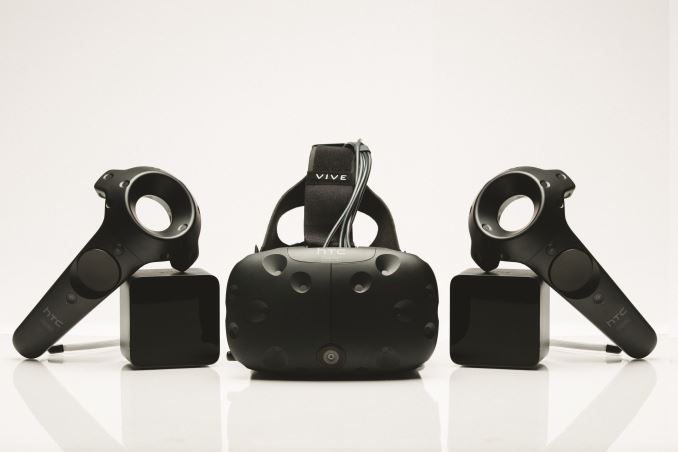

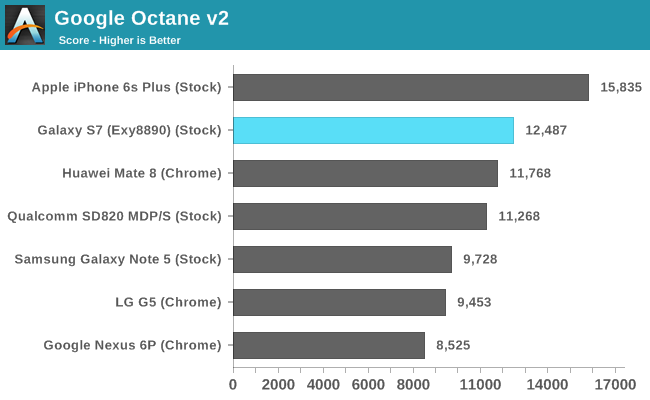

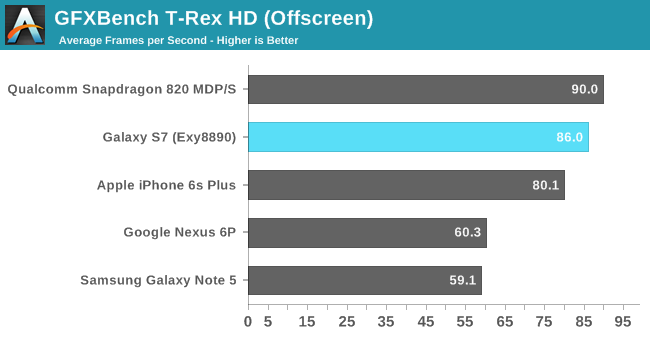
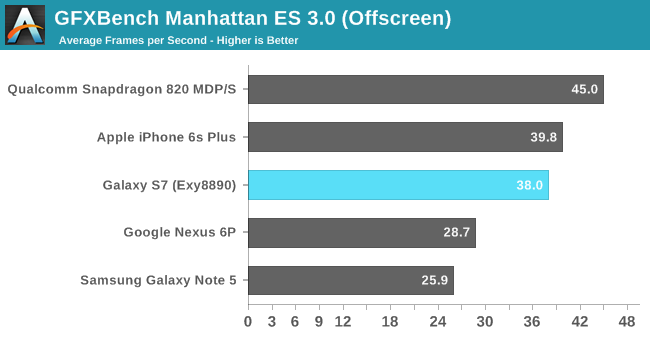




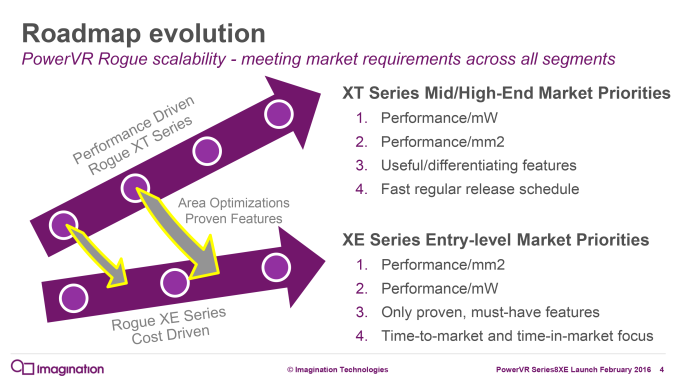
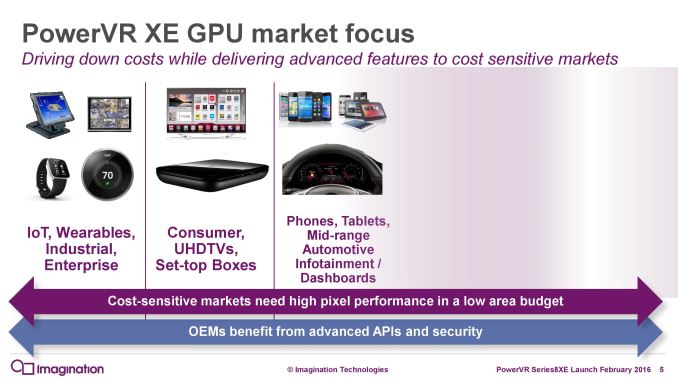
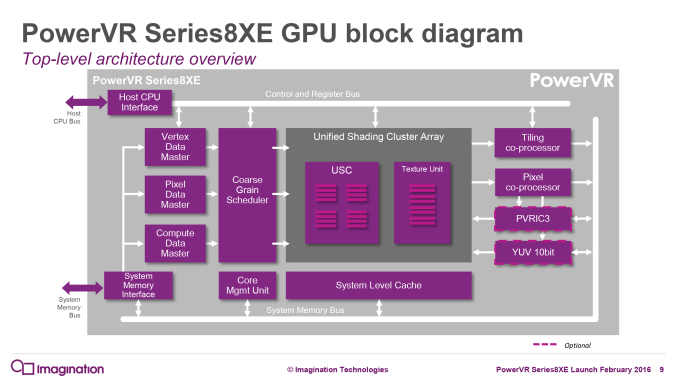
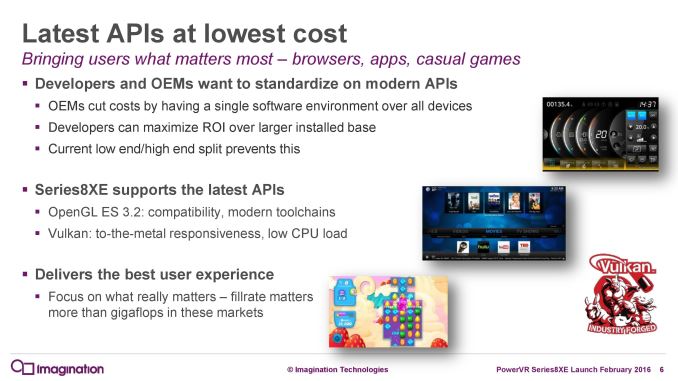
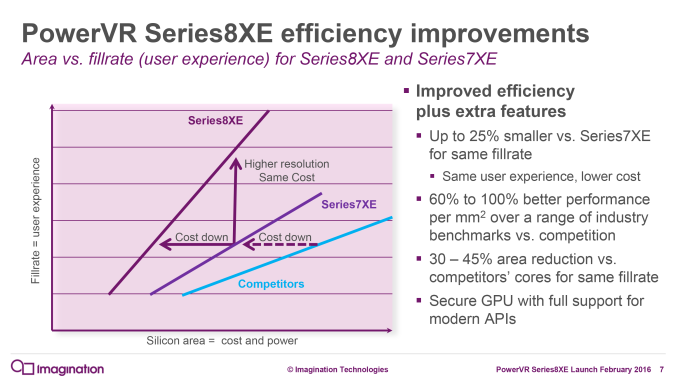
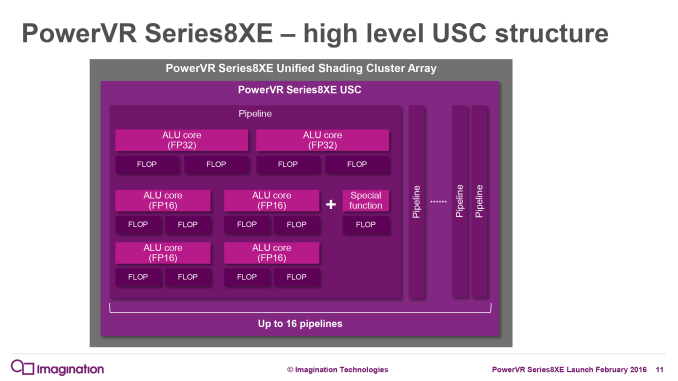
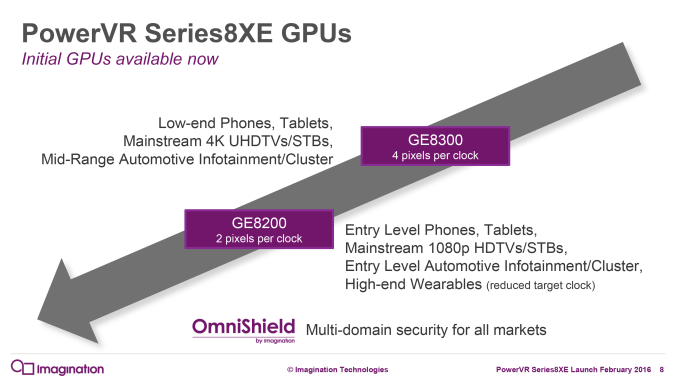
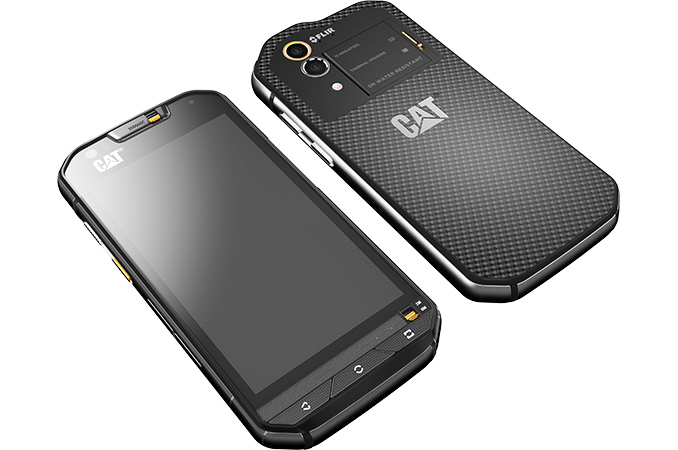

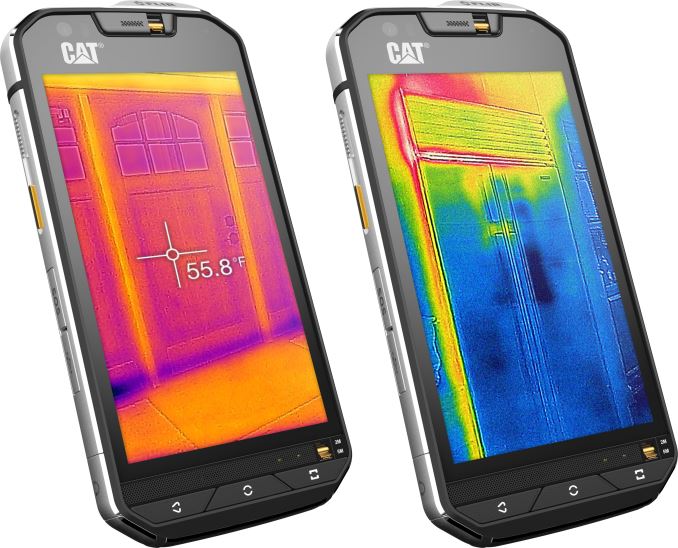
















Bookmarks